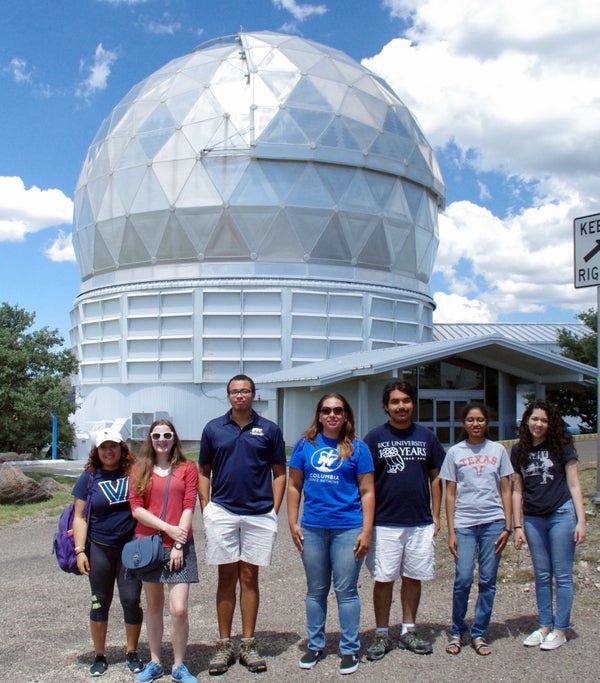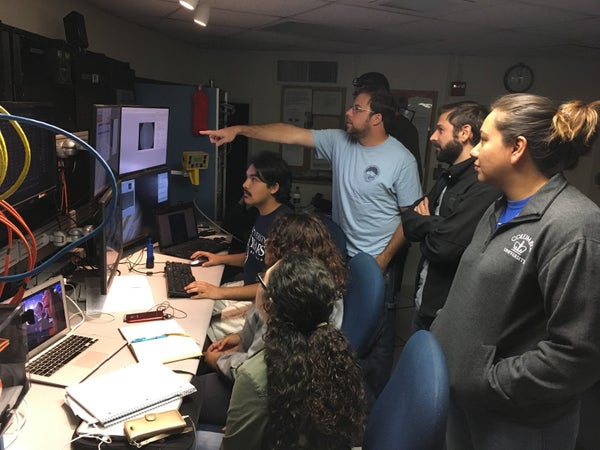This article was published in Scientific American’s former blog network and reflects the views of the author, not necessarily those of Scientific American
Scientists pride themselves on their objectivity. It’s a fundamental tenet of scientific logic, that whatever we study, it must be carried out in a matter of fact way, immune to our own human flaws. This has lead to the myth of the “meritocracy”: that the best scientists are simply the folks who design the best experiments, who accomplish the most, and those are openly celebrated by the scientific community for their ingenuity.
But most scientists are white. Most are men. This isn’t by chance. It is one piece of evidence pointing to a fundamental flaw in the process of science that systematically excludes people of color and women, even in the 21st century. Now, there has been some improvement: the proportion of white women scientists is creeping up decade by decade, but the contrast with more minoritized groups is striking. Representation from Black Americans, Latinx Americans and Native Americans is almost non-existent in the upper echelons of academic research, and it hasn’t grown in the past twenty years. It isn’t a coincidence that these are some of the most traditionally marginalized groups in the history of our society. In fact, physics and astronomy have some of the highest proportions of white representation compared to other STEM fields, and time has proven unhelpful in the battle for equal representation for people of color in the lab.
The TAURUS Program
On supporting science journalism
If you're enjoying this article, consider supporting our award-winning journalism by subscribing. By purchasing a subscription you are helping to ensure the future of impactful stories about the discoveries and ideas shaping our world today.
With support from the University of Texas at Austin’s Department of Astronomy and McDonald Observatory, we’ve created a program designed specifically to address the retention of undergraduate students of color in STEM. The Texas Astronomy Undergraduate Research Experience for Under-represented Students (TAURUS) is a 9-week summer research experience for highly-motivated, excelling students from traditionally marginalized groups from all over the country. TAURUS Scholars come to UT to work one-on-one with a professional astronomer on a research project—from discovering new planets around other stars to investigating galaxies at the edge of the Universe.

TAURUS Scholars and some UT Austin students in front of the Hobby-Eberly Telescope at McDonald Observatory. Credit: Caitlin Casey
The highlight of the entire TAURUS summer experience is a group trip to McDonald Observatory in west Texas. For most TAURUS Scholars, it will be their first trip to a professional observatory and their first trip to one of the darkest night sky sites in the world. Between taking turns steering the 2.7m Harlan J. Smith Telescope to scientific targets related to their summer research, the scholars sneak out to the observatory catwalk and let their eyes adjust to the dark skies. The ambient light from the Milky Way galaxy pops against the darkness, bright enough to cast a shadow. For TAURUS Scholars, this is, without a doubt, a key moment that fuels their motivation for becoming astrophysicists.
While their are many flavors of undergraduate research experiences for students of all STEM fields around the country, TAURUS builds in an extra component that makes this program unique. Scholars have a network of mentors from graduate students through their research advisors that keep tabs on their progress. Together with bi-weekly seminars on topics ranging from the latest in astrophysics to social justice in STEM, combined with a slew of social events and mentor check-in’s, TAURUS relies on community to ensure scholars reach their goals and feel encouraged and supported along the way. They remain a part of the UT community even after they have departed at the end of the summer, with guidance on graduate school applications and extended research projects. In additions to the benefits of this structured program for TAURUS Scholars, our graduate students and postdocs gain important experience in mentoring: a skill that is rarely practiced mindfully in STEM.
Watch a video about the TAURUS program
Our program’s number one goal is to be a constant resource for TAURUS Scholars to reach their career aspirations in STEM, whether that is going to graduate school in astrophysics, physics, or entering industry. Six months after their time at UT, all of the scholars are reunited at the annual meeting of the American Astronomical Society held in January, where they network with prospective graduate schools, employers, and other undergraduate students—including scholars from two other programs focused on elevating students of color, Harvard’s Banneker Institute and Aztlan Institute.
TAURUS, together with Banneker and Aztlan, hope to transform one tiny sector of STEM by propelling these highly-motivated students of color towards the astrophysics careers to which they’ve always aspired, but which they might not have had access to, or not received the right kind of career “boost” needed to flourish. These “boosts” are the type of career advancement many of us in the majority take for granted—conducting cutting-edge research, having a well-connected supervisor, and having a slew of great role models.

TAURUS Scholars operate the 2.7m Harlan J. Smith Telescope at McDonald Observatory with the help of UT Austin Postdoctoral Scholar Drs. Adam McKay and Brendan Bowler. Credit: Caitlin Casey
Rejecting Stereotypes Improves Science
Many scientists aren’t very cognizant of discrimination and unconscious bias in STEM, including many women. Sometimes it takes tangible setbacks to open our eyes to the challenges of professional advancement in a field where you aren’t proportionally represented. It’s important to recognize that it’s not just under-representation that’s the issue, though: it’s actively harmful stereotypes about intelligence and a fixed-mindset notion of what makes someone “brilliant” that seep into our sub-conscious after years of social conditioning. Human scientists are not immune from the social world in which they live, and the sooner we can get more scientists to acknowledge their flaws and their privilege then the more welcoming STEM will be to a broader base of participants. Broadening participation is key: not only does it level the playing field and allow all young folks to aspire to their dreams, but it can also have lasting positive effects on the quality of our science, too.
TAURUS is fundraising for the 2017 class of scholars throughout the month of November and early December. Like the TAURUS facebook page, follow us on Twitter, or visit our website to learn more.